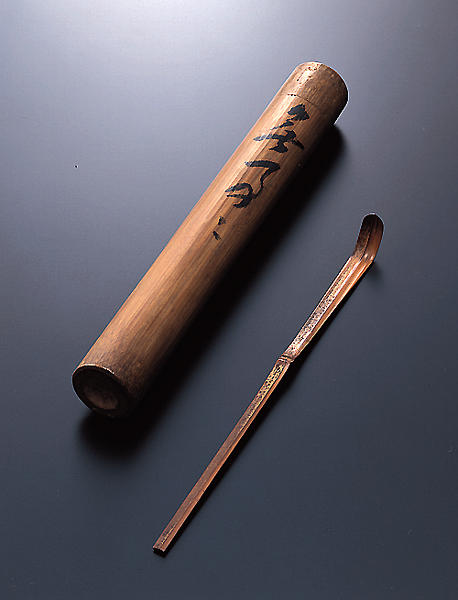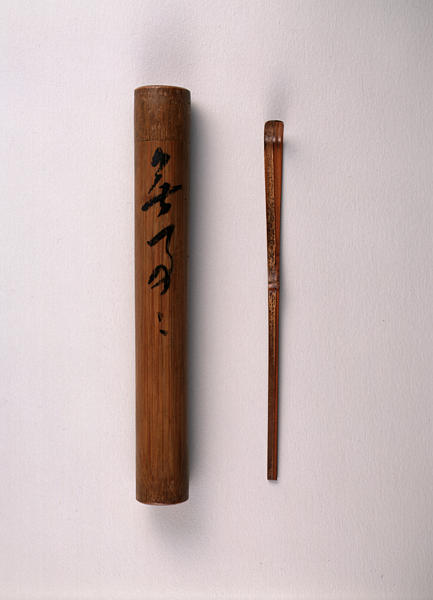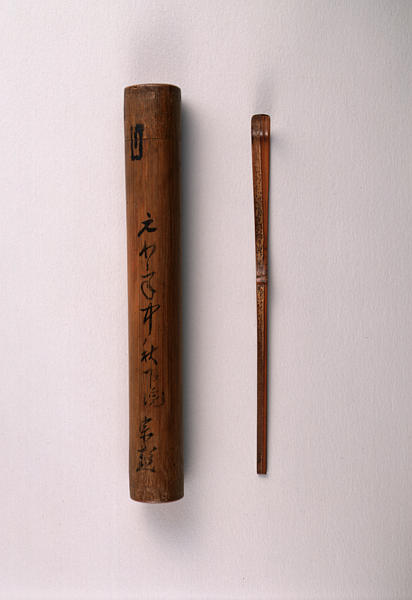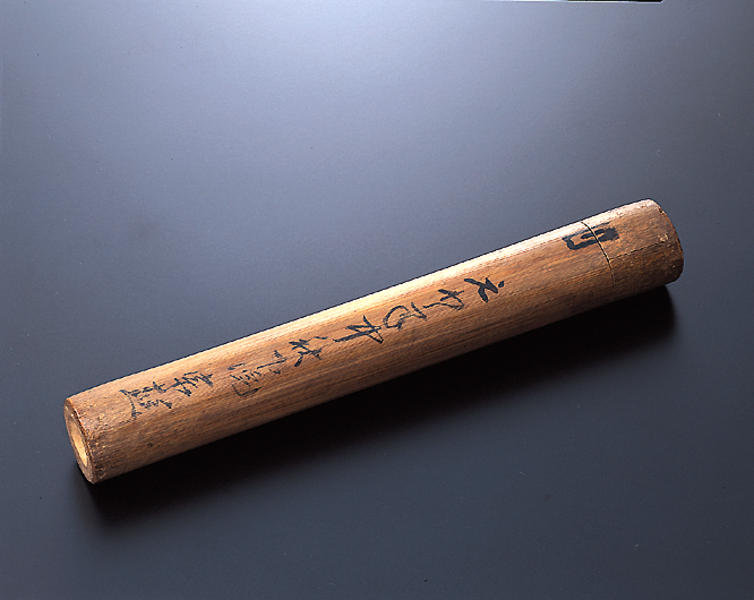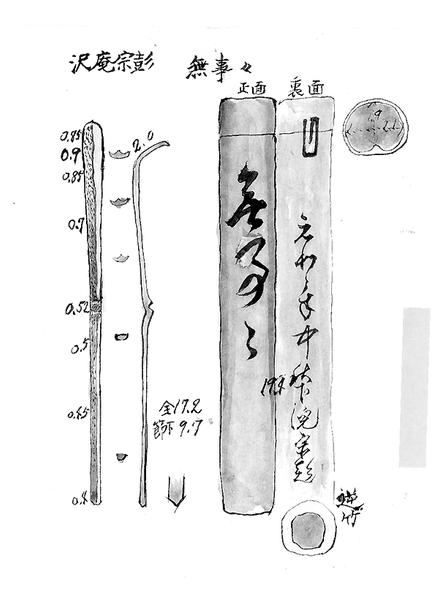Tea Scoop, named "Buji Buji," by Takuan Soho
- Edo priod
- Gen’na 3 (1617)
- Bamboo
- H-17.2
Catalogue Entry
by Takuan Soho
Edo period, 17th century (dated 1617)
Length, 17.2cm
Takuan Soho (1573-1645) was born in Izushi in northern Hyogo prefecture, entered the Sukyoji temple in Izushi at the age of 14, and then studied under Shun'oku Soen of Daitokuji. In 1604 (Keicho 9), he took the dogo name of Takuan and became the 153rd head priest of Daitokuji in 1609, but he resigned the position after only three days. In 1627 (Kan'ei 4), he was exiled in the Shie incident, and in 1632 was pardoned, and at the behest of Iemitsu, opened the Shinagawa Tokaiji temple. While living in Kyoto, Takuan studied tea with the Fushimi shogunal administrator Kobori Enshu and numbered Karasumaru Mitsuhiro and Shokado Shojo among his close friends. He made a considerable number of tea scoops, including such representative examples as "Shaka," "Murakumo," 2 inscribed with a Kan'ei 1 date and Hatsufuyu-no-uta, respectively.
This "Buji" scoop is accompanied by a bamboo container which is inscribed in impressive calligraphy with its name, and on the back of the container, Takuan used his distinctive
written seal as a closure seal and dated and signed the container with a mid-autumn
1617 date: "Gen'na sannen chushu gekan Soho." Such a date and signature by Takuan is rare. He was born in 1573, and thus this signature dates from his 45th year under the
kazoe age system. His lack of worldly ambition and integrity was demonstrated in his
resignation from the titular headship of Daitokuji after only three days. From his retirement until his banishment to Kaminoyama, Takuan was active as a cultured Zen priest in Kyoto, and this tea scoop is a product of the period in which the aristocracy and cultured
members of Kyoto society enjoyed the tea ceremony. As seen in the photograph, the
scoop is made of shimitake , with the upper half of the front surface vertically divided into
two troughs, with one whitish and the other stained with goma dotting, and the back
showing whitish both above and below the node. The fact that Takuan was able to obtain this rare bamboo and then bend it and make it into a tea scoop can be thought to have been the impetus for him to make the rare effort to sign the container with his own written
seal, write the name of the scoop in large letters, and then sign and date the container.
Both the tea scoop and its container are elegant, major works by this tea master. NM
